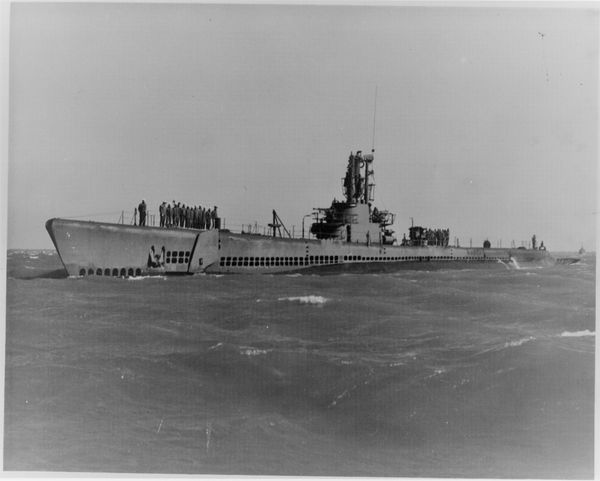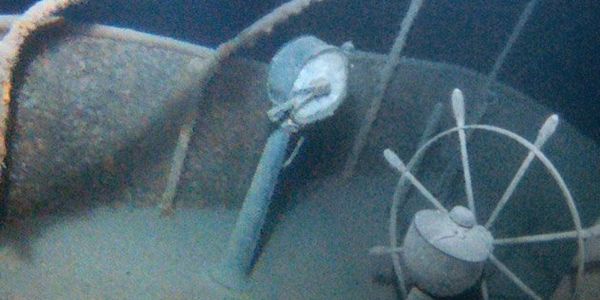Exhibits
Lighthouse Lens Collection
The Marquette Maritime Museum has one of the best collections of lighthouse lenses anywhere in the Great Lakes, including 2nd, 3 ½ and 4th order Fresnel lenses. When the DB24 airport beacon and modern acrylic systems are included, the visitor can see nearly the entire evolution of lighthouse illuminating systems. All that is missing is a Winslow Lewis lamp (and if anyone has a lead on one, please let our staff know!).
The Wreck of the Edmund Fitzgerald
On November 9, 1975, the EDMUND FITZGERALD set out on her fill-fated voyage from Superior, Wisconsin on a routine trip to Detroit, Michigan. The ARTHUR M. ANDERSON was traveling behind the FITZGERALD as they made their way across Lake Superior. By the next day, the two ships were caught in a vicious storm with near hurricane-force winds and waves up to 35 feet high. The two ships kept in contact with each other. On November 10th, at 3:30 PM, the FITZGERALD reported some topside damage, missing railings and a list and asked the ANDERSON to stay with them until Whitefish Point.
Sometime before 7:00 PM, the ANDERSON was struck by two huge waves that put water over the pilothouse. The ANDERSON checked in with the FITZGERALD and Captain McSorley reported that the FITZGERALD lost both of their radars and asked the ANDERSON to help with navigation. The last words to come from the FITZGERALD were “We are holding our own.” At 8:25 PM on November 10, 1975, the ANDERSON radioed the Coast Guard at the Soo to report the FITZGERALD missing. The ANDERSON and other vessels in the area went out in search of the FITZGERALD but the ship was lost with all hands on deck. The wreck site was found and in May of 1976.
Henry B. Smith Shipwreck
The worst storm to ever hit the Great Lakes happened November 5-11, 1913. This storm was a result of two weather systems colliding over all of the Great Lakes. The HENRY B. SMITH arrived in Marquette on November 6, 1913 to load up with 9,500 tons of iron ore. The storm conditions were causing gale force winds and snow up to two feet in some areas around the Lakes.
After loading up, the SMITH thought they were in the clear and left Marquette. Unfortunately, twenty minutes after leaving the dock, 35-foot waves crashed over her deck, drenching the deckhands who were struggling to secure the hatches. Instead of turning to the starboard on the usual course, the Captain hauled to the port side, possibly heading for shelter behind the Keweenaw Point to the north. The SMITH and her crew were never seen again.
In May of 2013, after nearly 100 years of being lost, the Henry B. Smith was found 500 feet below Lake Superior and thirty miles out from Marquette Michigan.
Stannard Rock Lighthouse
The 110-foot sandstone Stannard Rock Lighthouse tower was built on a desolate reef first discovered in 1847 by Captain Benjamin Stannard of the Brig JOHN JACOB ASTOR. The rock reef shot up from hundreds of feet of water. All around it was clear sailing but the reef was a deadly hazard, especially considering the shipping lane between Whitefish Pont and Duluth was just a few miles to the north. Located 44 miles due north of Marquette, Stannard Rock's lightkeepers called it the “loneliest place in North America” since it is the most distant lighthouse from land on the continent. Construction on the light started in 1877 and when its beacon was first illuminated on July 4 1882, it was the most expensive and difficult light ever built on the Great Lakes, costing $305,000.
Stannard Rock remained a manned light until 1961 when a gas explosion killed one Coast Guard keeper and wounded two others. The Coast Guard rapidly automated the light, removing the huge second order Fresnel lens and replacing it with a plastic optic. The old 2nd order Stannard Rock lens is now on display in the Marquette Maritime Museum.

McClintock Annex
The McClintock Annex is dedicated to the extraordinary story of the submarines USS DARTER and USS DACE and their role in the Battle of Leyte Gulf, October 23-26 1944. Leyte Gulf, Philippine Island, was the largest sea battle in history and the pivotal point in the defeat of the Japanese Empire. The Annex is named for Captain David McClintock, USN, Retired, a Marquette native and commander of the DARTER during the fierce battle.
Key exhibits in the Annex include:
• A large three-dimension diorama depicting the Battle of Leyte Gulf in the Philippines and the roles of the DARTER and DACE. This is the largest naval battle in history!
• A 40 foot tall World War II working periscope.
• A host of World War II submarine and Captain David McClintock memorabilia
A replica of the Darter and Dace Conning Tower is located in Ellwood A Mattson Lower Harbor Park.
This website uses cookies.
We use cookies to analyze website traffic and optimize your website experience. By accepting our use of cookies, your data will be aggregated with all other user data.
